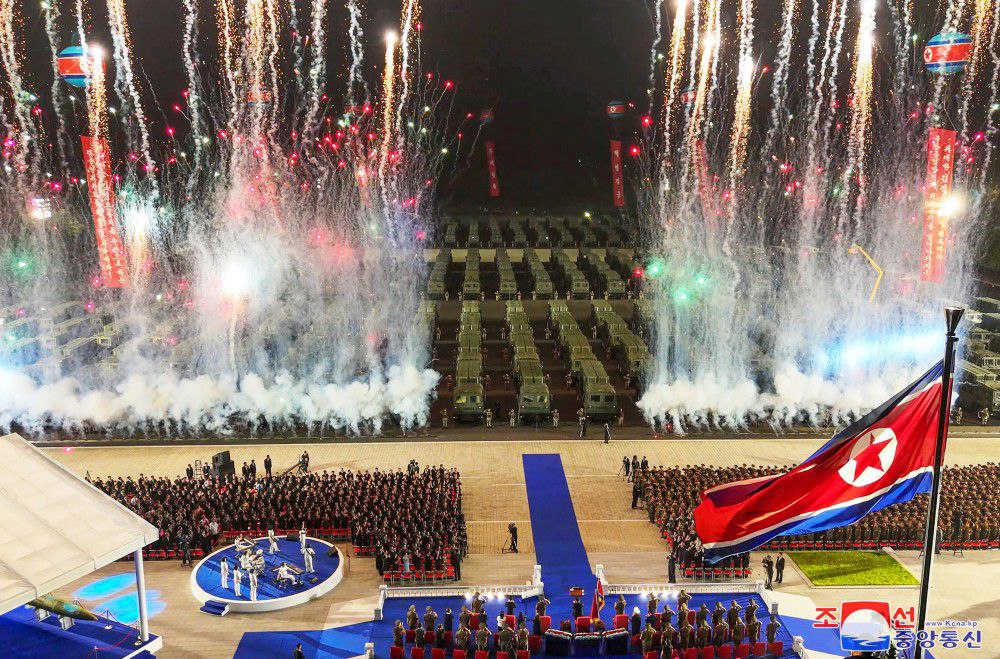In yet another demonstration of commitment to South Korea’s security in the face of rising tensions, the US Army is conducting a rapid deployment of men and material to South Korea.
The US Army stationed in South Korea announced on August 5 that an armored unit is currently carrying out a routine exercise to rapidly deploy soldiers from the US mainland to South Korea as part of efforts to maintain rapid response capabilities, South Korea’s Yonhap News Agency reported.
According to the report, to participate in the ‘Pacific Fortitude’ exercise, the 8th Army (a forward-deployed unit of the US Army that serves alongside the Combined Joint Force securing the Republic of Korea) announced that a battalion from the 1st Armored Division in Texas was sent last month to a US military installation close to Daegu in South Korea, which is located 233 kilometers southeast of Seoul.
Moreover, the statement noted that the troops at Camp Carroll, along with the 19th Expeditionary Sustainment Command, started gathering combat equipment just six days after being informed about the drills on July 17. The exercise reportedly evaluates the functionality of equipment currently in South Korea.
“On July 17, 2024, Soldiers from 4th Battalion, 70th Armored Regiment, 1st Armored Brigade Combat Team, 1st Armored Division, were notified they would leave Fort Bliss, Texas, for a no-notice deployment readiness exercise. Six days later, they began drawing combat equipment at Camp Carroll, South Korea.”
As part of the standard, routine Pacific Fortitude readiness validation process, a US Army unit is assessed on its capability to successfully deploy people to a specific location quickly, perform training there, and then redeploy back to its home station.
“The United States military can deploy forces at a moment’s notice from the continental United States into South Korea and be prepared to defend the South Korean homeland and liberty abroad,” Col. Michael Long, Eighth Army Strategy, Plans, and Policy (G5) director was quoted as saying in a US Pacific Command statement.
“What we need to do that is 1st Armored Division’s capability, we need all the great equipment that exists at 19th Expeditionary Sustainment Command, and we need 2nd Infantry Division’s ability to train it. All that together helps us make that continuous commitment to the alliance.”“Having this critical equipment already in place allows us to project this power at the right time and the right speed,” Brig. Gen. Jin Pak, commander of the 19th Expeditionary Sustainment Command, said in a release. “This deployment readiness exercise proves to our allies that the United States is committed to the defense of the ROK-U.S. alliance.”
The development comes days after the US Stryker combat vehicle unit participated in joint live-fire drills with the South Korean military along the North Korean border. “This training enhances the rotational brigade’s ability to adapt to the terrain and weather of the Korean Peninsula and incorporates Korean military equipment and tactics into small unit tactics,” the South Korean Army said in a statement.
The US regularly conducts joint military drills with its key Asian ally, South Korean forces. These drills are often condemned by North Korea as a rehearsal for an invasion.
That said, the latest drills and troop deployment come at a time when tensions between the two Koreas are at an all-time high. Earlier, after North Korea sent several trash-filled balloons over South Korea, the latter suspended a key military pact between the two states to resume front-line military activities.
North Korean Military Gets 250 Launchers
North Korean leader Kim Jong Un oversaw a ceremony to mark the delivery of 250 new tactical ballistic missile launchers to frontline military units.
The launchers are intended to fire “tactical” ballistic missiles, which are systems that can deliver lower-yield nuclear warheads, according to the official Korean Central News Agency of North Korea. They were manufactured recently by the nation’s munitions factories.
Kim called the launchers a “modern tactical attack weapon” that he had “personally designed.”
Kim expressed a desire to place battlefield nuclear weapons along the North Korean border and given his military permission to launch preemptive nuclear attacks in response if it believes that the leadership is in danger, which has raised concerns about his nuclear program.
Speaking at the ceremony in Pyongyang, Kim stated that the new launchers would provide his front-line soldiers with “overwhelming” firepower over South Korea and improve the practicability and efficiency of using tactical nuclear weapons.
Observers said tha the missiles are probably not as far-reaching as some of North Korea’s most potent short-range ballistic missiles, which have been shown to be capable of traveling over 600 kilometers (372 miles).

Photographs from the Pyongyang ceremony were released by state media agency KCNA. The photographs showed launcher trucks painted in camouflage colors arranged in a floodlit plaza decorated with flags. There was a fireworks show during the celebration, and soldiers were in formation.
In addition to developing intercontinental ballistic missiles intended to reach the continental United States, North Korea has been extending the range of its mobile short-range weapons, which are intended to overwhelm South Korea’s missile defenses.
Needless to say, both the US and South Korea remain firmly opposed to North Korea’s burgeoning nuclear missile program. Lee Sung-Joon, the spokesperson for South Korea’s Joint Chiefs of Staff, told a media briefing, “We believe [the missile launchers] are intended to be used in various ways, such as to attack or threaten South Korea… Deploying near the border would mean that the range is not long.”
On his part, Kim accused Washington of imposing a “nuclear-based military block” that compelled his nation to bolster its armed forces even further.





